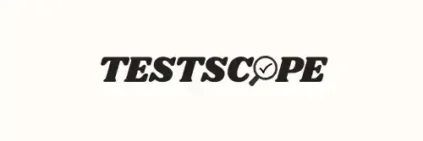Integrations Pro
This page explains how to prepare your data for Testscope Pro. It is documentation only — no uploads or integrations happen here. Use these instructions to export from your tools and format a simple CSV or JSON file for import in-app via the Estimator Workbench. Full Pro functionality is available with a free trial.
Where Imports Happen (In-App)
- Estimator Workbench → Import: Upload CSV/JSON directly in Testscope Pro.
- Project presets & risk: Choose in-app; you generally do not include risk ratings in files.
- Reports: After import, generate P50/P80/P90 estimates and export Pro reports (CSV/JSON/PDF).
This page is a text-only guide for preparing files before using the in-app import.
What You Can Import
Testscope Pro accepts two lightweight formats that cover the vast majority of teams:
- CSV: A spreadsheet with a header row and one record per scope item, sprint, or feature.
- JSON: An array of objects with consistent keys. Great for pipelines or exports from BI.
Minimal data needed: features, complexity, platforms, integrations.
Optional but recommended: hours (lets you calibrate hours/test point from history).
Field Mapping Reference (Estimator Workbench)
| Field (required *) | Type | Meaning | Example |
|---|---|---|---|
| * features | integer | Count of user stories / testable items in scope. | 24 |
| * complexity | integer 1–5 | Normalized complexity per item (1=trivial, 5=very complex). | 3 |
| * platforms | integer | Distinct platforms/browsers/devices to cover. | 4 (Chrome, Safari, iOS, Android) |
| * integrations | integer | External systems touched (payments, auth, 3rd-party APIs). | 3 (Stripe, Okta, Shipping API) |
| hours | number | Actual QA hours for the scope (historical projects only). | 380 |
| labels | string or array | Tags or notes used for grouping. | "checkout, release-1.4" |
| release | string | Version or milestone identifier. | 1.4.0 |
Tip Risk ratings (requirements clarity, volatility, environment stability, team experience) are selected in-app and applied consistently across your imported scope.
How to Prepare a CSV (Step-by-Step)
- Export from your source (Jira, Azure DevOps, TestRail, spreadsheet).
- Keep only the columns you need; rename headers to the mapping above.
- Normalize complexity to a 1–5 scale. (Example: Story Points 1–3→
2, 5→3, 8→4, 13→5.) - Count your platforms (browsers/devices/OS) and integrations (external systems).
- Optional: include historical hours if available for calibration.
- Save as UTF-8 CSV with a single header row.
features,complexity,platforms,integrations,hours,labels,release
24,3,4,3,380,"checkout,release-1.4",1.4.0
18,2,3,2,240,"profile,hotfix",1.4.1
30,4,5,5,520,"holiday,web+mobile",1.5.0
How to Prepare JSON
Provide an array of objects using the same field names. Extra fields are ignored safely.
[
{"features":24,"complexity":3,"platforms":4,"integrations":3,"hours":380,"labels":["checkout","release-1.4"],"release":"1.4.0"},
{"features":18,"complexity":2,"platforms":3,"integrations":2,"hours":240,"labels":["profile","hotfix"],"release":"1.4.1"},
{"features":30,"complexity":4,"platforms":5,"integrations":5,"hours":520,"labels":["holiday","web+mobile"],"release":"1.5.0"}
]Data Quality Checklist
- Headers exactly match:
features,complexity,platforms,integrations(and optionalhours). - All required fields are numeric and non-negative;
complexityis between 1 and 5. - One row per scope bundle (e.g., per epic or per feature set) to avoid double-counting.
- If mixing mobile + web, reflect that in
platforms(e.g., 4 = Chrome, Safari, iOS, Android). - For historical calibration, ensure
hoursinclude planning/design/execution/triage for QA only.
Non-Functional Coverage Notes
If you plan to include Performance, Security, Accessibility, or Compliance testing in scope, add a labels value such as "perf", "security", "a11y", or "compliance" so you can filter and compare variants when estimating.
Historical Calibration (Optional)
When your CSV/JSON includes hours, Testscope Pro computes a calibrated “hours per test point” specific to your team, improving future estimates. If you lack consistent historicals, you can still estimate — calibration is optional.
Native Connectors (Pro Roadmap)
- Jira Cloud / DC: Pull issues by epic, fixVersion, or label; map Story Points to 1–5 complexity.
- Azure DevOps Boards: Pull by iteration path; map custom fields to Testscope fields.
- TestRail / Zephyr: Import past run hours for calibration; export P80/P90 to test plans.
- Webhooks / API: Retrieve estimates as JSON/CSV; optional Slack notification when ready.
Note This page intentionally provides instructions only. Enable connectors inside Testscope Pro when available — not here.
Security & Privacy
- Share only the minimal fields listed above — drop names, emails, or PII from your exports.
- Keep sensitive details (e.g., production credentials) out of CSV/JSON files.
- Version your files and store them in your own secure repository (e.g., Git, SharePoint, Google Drive).
